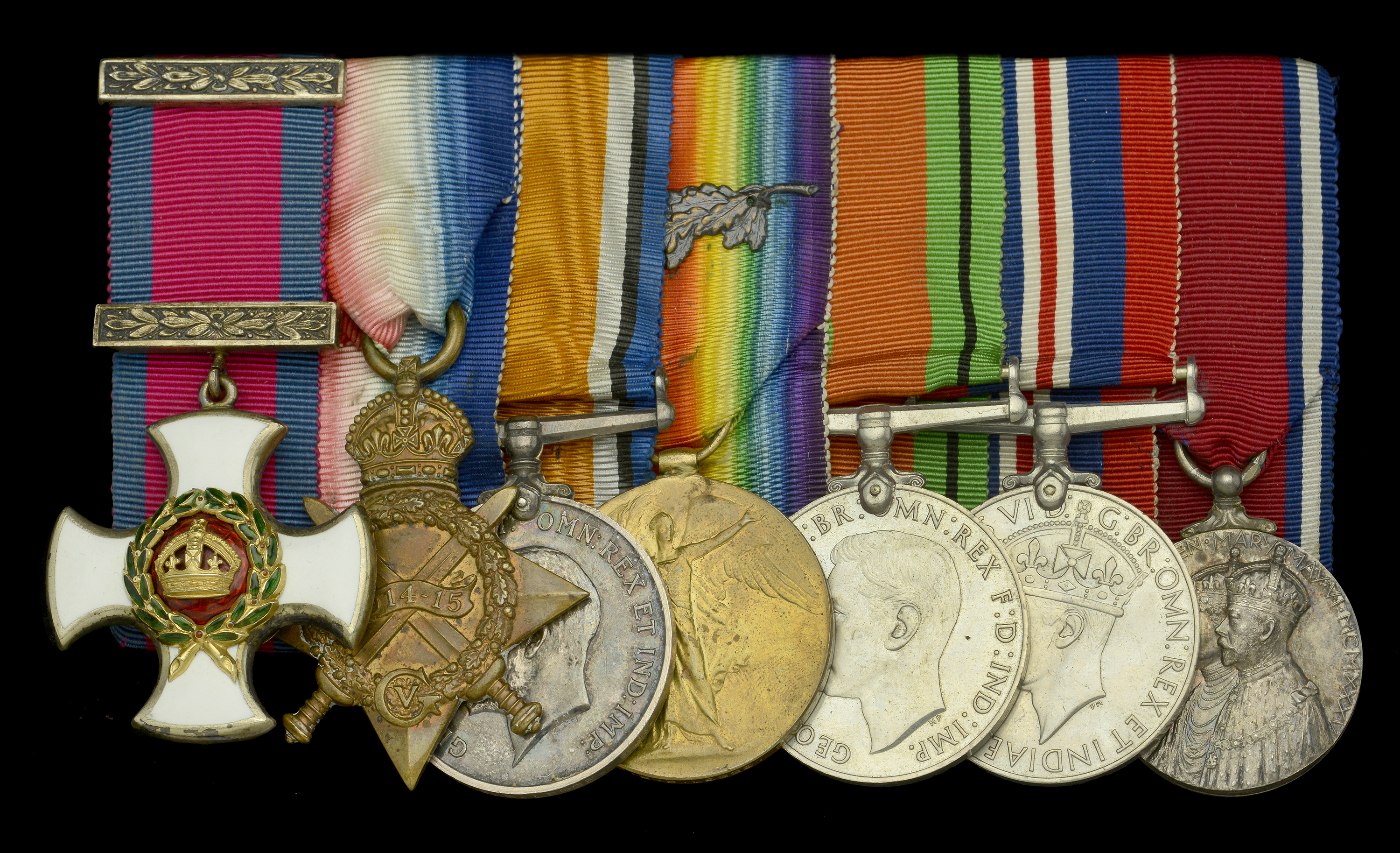The Great War Jutland D.S.O. group of seven awarded to Rear-Admiral M. G. B. Legge, Royal Navy, who was decorated for his gallant command of the destroyer Nerissa, in which ship, as part of 2nd Division, 13th Destroyer Flotilla, he fought in close proximity to Barry Bingham, V.C. Distinguished Service Order, G.V.R., silver-gilt and enamels, with integral top ribbon bar; 1914-15 Star (Lt. Commr. M. G. B. Legge, R.N.); British War and Victory Medals, with M.I.D. oak leaves (Commr. M. G. B. Legge. R.N.); Defence and War Medals 1939-45; Jubilee 1935, mounted court-style as worn, good very fine and better (7) £6,000-£8,000 --- Importation Duty This lot is subject to importation duty of 5% on the hammer price unless exported outside the UK --- --- Provenance: Exceptional Naval and Polar Awards formed by R. C. Witte, Dix Noonan Webb, December 2007. D.S.O. London Gazette 15 September 1916: ‘Having defeated the enemy destroyers, he gallantly pressed home an attack with torpedoes on the enemy battle cruisers.’ Montgomery George Bentinck Legge was born in Paddington, London on 16 December 1883, a scion of the Dartmouth family, and entered the Royal Navy as a Cadet in Britannia in May 1898. Appointed Midshipman while serving in the battleship Canopus in the Mediterranean in January 1900, he was advanced to Lieutenant in September 1905 and to Lieutenant-Commander in September 1913, and was in command of the destroyer Forester at the outbreak of hostilities in August 1914. As such, he was quickly in action at Heligoland Bight on the 28th, when his ship shared in the destruction of the enemy destroyer V-187, and again at Dogger Bank in January 1915. Removing to the destroyer Nerissa in April 1916, he was subsequently present at Jutland in the 2nd Division, 13th Destroyer Flotilla: ‘4.30: 13th Flotilla ordered to attack the enemy’s battle-cruisers with torpedoes. Took station astern of the 3rd Division of 13th Flotilla and commenced my attack on a northerly course, owing to the enemy turning 16 points. This attack had eventually to be carried out on a southerly course, which I did in company with the Termagant, firing two torpedoes at a range of 7,000 yards. Just previous to this Nomad was observed quite close, stopped and apparently badly damaged in the engine-room. The enemy’s light-cruisers were firing accurate salvoes during the attack, and this fire was returned, and though spotting was very difficult, one torpedo apparently took effect on the rear ship. I rejoined Champion on the disengaged side of the battle-cruisers, steering to the northward and joined the Grand Fleet, remaining in company with the Champion for the remainder of the action’ (Legge’s official report, refers). He was mentioned in despatches (London Gazette 16 July 1916), and awarded the D.S.O., and remained in command of the Nerissa until removing to the Vesper in January 1918, again having been in action in the Heligoland Bight on 16-17 November 1917. Following service in the Black Sea in Vesper 1919-20, Legge was appointed, in November 1922, on joining the Widgeon in the Far East, Senior Naval Officer, Upper Yangtse. He remained similarly employed until 1924, a period that witnessed a run-in with local junkmen over the transport of wood-oil down river, and the murder of the manager of the British Trading Company at Wanhsien, but the threat of imminent bombardment appears to have quelled the disturbance. Indeed, Legge was cited as having ‘acted with firmness, good judgment and ability’, and to have ‘enhanced the reputation of the Royal Navy on many occasions of trouble’ (his service record. refers). From May 1927 to December 1928, and having been advanced to Captain (D.), he commanded the flotilla leader Stuart and, after lending valuable assistance in the aftermath of the Corinth earthquake, was awarded the Greek Red Cross Society’s Commemorative Medal - a distinction that Their Lordships permitted him to accept, but not wear. Legge next returned to the Far East, where he served as Naval Attaché to His Majesty’s Mission in Japan and China from December 1929 to January 1933, prior to returning home for his final seagoing command, the battleship Centurion. Appointed an A.D.C. to the King in July 1936, he was placed on the Retired List in the rank of Rear-Admiral in the same month. Recalled on the renewal of hostilities, Legge was appointed Roof Lookout Control Officer for the Air Ministry in the Westminster-Kingsway sector but would appear to have been released before the War’s end due to ill-health. He died in February 1951.





